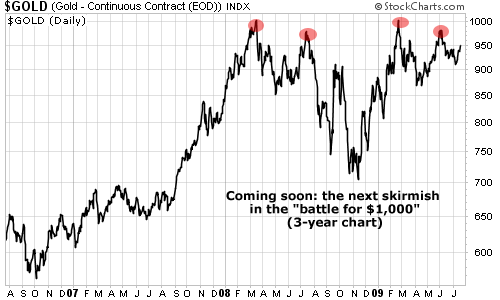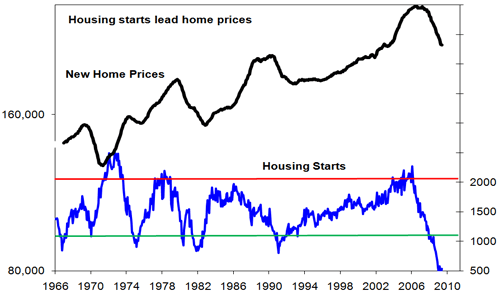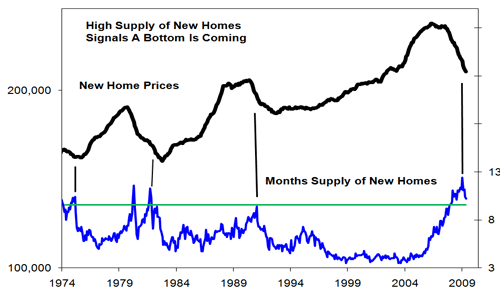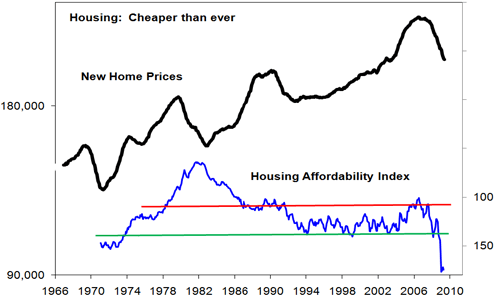Dear Reader,
Before you buy any more gold... please read this.
Our resident geologist says buying a unique type of
Chinese Gold could outperform U.S. gold over the next few years by 100% or more.
It's an eye-opening report, which I've included below.
You'll also find instructions on how to take advantage of this situation.
Good Investing,
Brian Hunt
Editor in Chief.
Why Chinese Gold could
pay 100% MORE than U.S. Gold over the Next 2 YearsDon’t by another ounce of gold until you read this report.
In short: The Chinese government has created a secret new gold investment. The last time the gov’t did something like this, investors could have made 1,084%

Dear Reader,
China has gone crazy for Gold.
In April, for example, the government's Foreign-Exchange Agency announced the purchase of an additional 16 MILLION ounces for state coffers.
And just a few months earlier, National Geographic Magazine reported that for the first time China had surpassed the U.S. as a buyer of gold jewelry.
But here's the amazing thing few investors realize...
Behind the scenes, in a move that has gone almost completely unreported in the Western press, the Chinese government has created a gold investment that could dwarf the returns of gold bullion, ordinary gold stocks, or any other type of gold investment you've heard of before.
I wouldn't be surprised if you see gains of 1,000% or more.
I realize that may sound impossible, but consider...
This is not the first time Beijing leaders have secretly created such an opportunity:
In the late 1990s, the Chinese government created two similar investments. One (to help the local insurance industry) went up more than 625% in just a few years... the other (to aid the energy sector) has gone up about 1,084% over a similar period.
But this is the first time Chinese officials have intervened in this way in the gold markets—and I expect the result will be a windfall for savvy investors over the next few years.
After all, gold is one of the only "buy and hold" investments in the world right now. It is also the only investment in the world that has gone up EVERY YEAR for the past five years straight. And, remember, China remains the fastest-growingeconomy on the planet, with the wealthiest government on Earth.
The point is, if you are interested in an extremely lucrative way to own gold, right alongside the Chinese government, this is something you should consider.
I can just about guarantee you will not hear about this opportunity in any mainstream media publication. I heard about it only because of a contact in the industry, who met recently with officials in Beijing.
I expect the word will soon get out. But until then, you have an incredible opportunity. Let me show you what's going on...
The most reliable
way to see 500%+There's been perhaps only one truly reliable investment trend over the past 20 years.
Bull markets have come and gone. Stocks have done well during some periods... and crashed during others. Same with bonds and real estate.
But there's one type of investment that has continued to reliably pay an absolute fortune.
In short: When the Chinese government creates a new investment vehicle, by spinning off part of a government entity, early investors have made a killing.When the Chinese government realized they needed to improve their insurance industry, for example, they broke up state-run agencies, and created China Life Insurance, the only company with a national license. Investors have made 625% in the past five years.
When the Chinese government realized they needed more industrial supplies for manufacturing, they spun off state operations and created a firm called Chalco... which paid more than 2,100% over a six year period. They did the same with mobile phones, turning state interests into a public company that has provided 583% gains since becoming available.
And they did the same thing not too long ago in the oil industry...
First oil... now GoldIn the 1980s there basically was no "oil business" in China.
But the economy at the time was growing nearly 10% per year... and the government realized they had to become a major player.
The first thing they did was open up their own reserves for exploration. A government-created and partially government-owned business called China National Offshore Oil Corporation received an exclusive right to explore, develop, and produce oil with overseas partners. Investors have made more than 837% on this company since 2001.
Next, the Chinese government rewrote the energy rules, injected billions of dollars of capital, and in 1999 spun several new businesses out of the state-run China National Petroleum Corporation (CNPC).
** PetroChina, for example, was set up with the help of Goldman Sachs. Early investors in Petro China made 1,084% in about four years.
** Another spin-off from the state-run oil monopoly was a company called Sinopec. The government still owns 70%. And investors who got in early made about 960% over a seven-year period.
The point is, China woke up to the fact that they needed to own and control as much oil as possible, to grow the economy and become a world power.
And now...
What the Chinese government did for oil over the past decade... they are today doing for gold.
This is a huge development.
 | You see, most investors don't realize that China is now the world's largest gold producer (they passed South Africa last year). |  | China is also one of the few countries in the world where known gold reserves are increasing... not shrinking.
That's why I predict that investing in China's government-created and partnered gold companies will be one of the easiest ways to get rich over the next few years.
Let me explain how it's all going down...
China's Secret SolutionFor essentially the past 50 years, no one was allowed to touch gold in China... except for the government.
But today, that is changing... and in a hurry...
In short, the Chinese government wants more gold.
They realize gold is one of the only buy-and-hold investments in the world right now. And they've got a lot of money to spend... nearly $2 Trillion according to a recent report in The New York Times.
So the Ministry of Land and Resources has completely rewritten the country's mining laws (known as the Minerals and Resources Law) to encourage local and foreign companies to explore for and produce more gold.
The government has also recently created the Shanghai Gold Exchange, to allow anyone to trade gold, on the open market, without government interference.
But most importantly for you and me, the government has quietly gotten behind a handful of publicly traded gold companies.
I believe these deals could make you extraordinary amounts of money over the next few years.Let me show you the specifics, and why I believe this could make you so much money.
Remember, this is all happening incredibly fast in China—just like it did in the oil industry, where investors in Sinopec made 360% in 10 months... investors in PetroChina made 140% in less than year... and investors in China National made 102% in five months.
Twenty years ago, China produced an inconsequential amount of gold. Today, China is the #1 gold-producing nation in the world...
And these new government deals are poised to make some smart investors quite wealthy, very soon...
Investment #1: Gold Partnering
with the governmentWhen it comes to gold mining in China, it's a whole different world than what we're used to in America...
There's no such thing as a NI43-101 disclosure form for mining companies, like we have here at home. And instead of a handful of giant companies running the industy, like we're used to, it's basically thousands of small operations scattered across the country.
In short, it's like the American Wild West.
That's why having the government on your side can make all the difference in the world...
For example, there are two very small gold mining companies with government connections that have a very good chance at making you several times your money in the next few years...
GOVERNMENT GOLD PARTNER #1: Recently, the Chinese government helped create, and took nearly a 50% ownership stake in, a very small gold mining company, in order to develop a handful of the country's most promising gold projects.
Already, the company has two producing properties, and exploration permits for two of the countries most gold-rich, untapped areas.
What makes this investment so appealing is that normally, when you deal with investments in China, there are certain political risks.
Will the government approve your projects? Will you be allowed to explore and develop the most potentially lucrative territories?
But for this small company, the political risks are virtually non-existent. After all, the company is nearly half-owned by the government, so obviously it will have huge advantages.
That's why I believe there's a very good chance this company will eventually become one of the world's "major" developers. And if that happens, you could easily make 2,000% on a small investment stake today.
We saw what happened when the Chinese government got behind several promising oil companies. Investors made more than 1,000% gains over a several-year period.
Well, now I believe there's a very good chance the same thing is going to happen to this company in the gold business.
Consider that right now, this company sells for well under $5 a share. It was formed just a few years ago... and now has several projects in production, and several more on the way.
What's incredible, is that this company has never been written about in the The Wall Street Journal, Barron's, or any other U.S. newspaper or magazine.
GOVERNMENT GOLD PARTNER #2: The second company I want to tell you about was formed by key members of China's National Non-Ferrous Metals Industry Corporation, a state-owned company.
In other words, several Chinese government employees got together, and used their power, influence, and connections, to create a company that is now the biggest foreign gold producer in China (they also have a local Chinese partner, which maintains an 18% interest).
It's no surprise, of course, that this company (created by former government employees) became the first local-foreign company to develop a gold mine in China. Or that they are the largest gold producer in China today... and control the country 2nd largest mine.
In short, there's no foreign company in China that can get projects done like this company can. I think it's absolutely a no brainer to own the biggest foreign producer in the world's #1 gold-mining country.
Keep in mind, this is still, relatively speaking, a tiny, tiny stock. It costs less than $7 a share... and is much less than 1/10th the size of Barrick Gold, the world's biggest gold producer.
I believe this tiny company with China operations could return many times your money over the next few years. And I'm not the only one who thinks so...
A Canadian firm just bought 20% of the outstanding shares. And I believe they are probably willing to pay at least 50% more than the current share price for the rest of this small Chinese miner.
A buyout could quickly double your investment. But the truth is, I'd rather hold this company for the next few years and potentially see 500% gains or more.
And this brings me to a third government opportunity I haven't even mentioned yet...
Better than gov't-owned gold?I've described how the Chinese government is creating partnerships and spinoffs to develop the local gold industry.
Well... they are also spending a fortune to develop the local silver industry.
In a nutshell, the government is bringing in an experienced business to consolidate small mines, and to make them more efficient and profitable (while remaining partially government-owned).
And the good news for us is, there's basically one tiny silver mining company from Canada that has quietly become the government's favorite partner.
As I'll show you, this company is growing at a wildly fantastic pace. It is extremely profitable. And yes, it has the government as a direct partner on several of it's holdings.
In the Ying mining disctrict, for example, this small Canadian company has worked with the Chinese government to consolidate a group of mines, and has since turned them into a very profitable operation.
Today, this company produces tens of millions of ounces of silver every year—all in China. It is the cheapest mining company of it's type in the world, by far. And it has partnered with the Chinese government in a handful of projects.
On each of these projects, they pay NO taxes for the first two years.
And get this: Despite operating for just three years, this company is already the largest silver producer in China-- yet today it is still completely unknown.
I cannot say this strongly enough: You may never get another chance like this in your investment career... to buy such a cheap and wildly profitable mining company at the very beginning of what I see as a huge uptrend.
Overall, this company has grown its resources by an incredible 360% in roughly four years.
That's remarkable. And impossible to do in the U.S. or Canada... or any other developed country.
That's why China is the absolute best place in the world to grow a new mining company. Better still, we have a business that has no debt, almost $70 million in cash, and in large part because they are partnered with the government, has NEVER been turned down for a mining license.
My extremely conservative estimate for this company is a 100% gain before the end of this year (remember, it's still a very small company, and costs less than $5 a share). After that, the sky really is the limit.
I would not be surprised if this company ultimately becomes one of the most profitable stocks I recommend in my entire career.
Of course, I can't promise how much any of these companies are going to return over the next few years—there's no such thing as a guranteed investment.
But keep in mind: When mining companies get in early on new territories, they have a history of making investors an awful lot of money...
* A company called Rangold was instrumental in early mining operations in Mali. It has returned 634% in roughly the past five years.
* Keegan Resources got in early in Ghana, in West Africa, and has paid investors 489% in less than a year.
* A company called Buenaventure got in early in Peru's mining business... and has paid investors 1,293% over the past decade.
* And Barrick Gold... one of the companies that has made a business of being able to get in early in places like Peru, Argentina, and Tanzania, has returned a whopping 6,700% since going public.
I believe now is the perfect time to get in early on China's mining business, especially when you can have the government on your side.
And here's how I recommend you do it...
The New Secret of Getting
Rich in the Next 5 YearsMy name is Matt Badiali. I'm a geologist.
I have a Masters of Science (M.Sc.) in geology and more than 13 years of industry and research experience.
You see, for years I wanted to take my expertise in resource companies and help people understand the business... and make some good money at the same time. So, a few years ago I joined a research team called Stansberry & Associates, which includes a PhD in finance, a former CitiGroup bond trader, several Johns Hopkins scientists, the former head of a California brokerage firm, and several Certified Financial Planners and hedge fund managers.
I learned their trade. And they learned a bit of mine.
And – for the past four years – I've leveraged my knowledge of the industry to help thousands of everyday Americans see huge gains by investing in precious metals and energy-related plays.
I've been studying China's gold (and silver) industry very closely for the past few years.
As I mentioned, China is the world's largest producer of gold in the world today, and the third-largest producer of Silver.
But this industry is still in its infancy.
When China's exploration and production techniques get better, China will dominate the world's gold production in an even bigger way. You have to remember that for basically the past 50 years, China had essentially NO precious metals industry.
But now the sleeping giant is waking up.
"China represents one
of the world’s great remaining unexplored gold regions."
– Greg Jones, geologist
working in Southern China
|
|
| There are several extraordinary investment opportunities in gold and silver right now.
I hope you take advantage of them.
Good Investing,
Matt Badiali
Editor, The S&A Resource Report




















